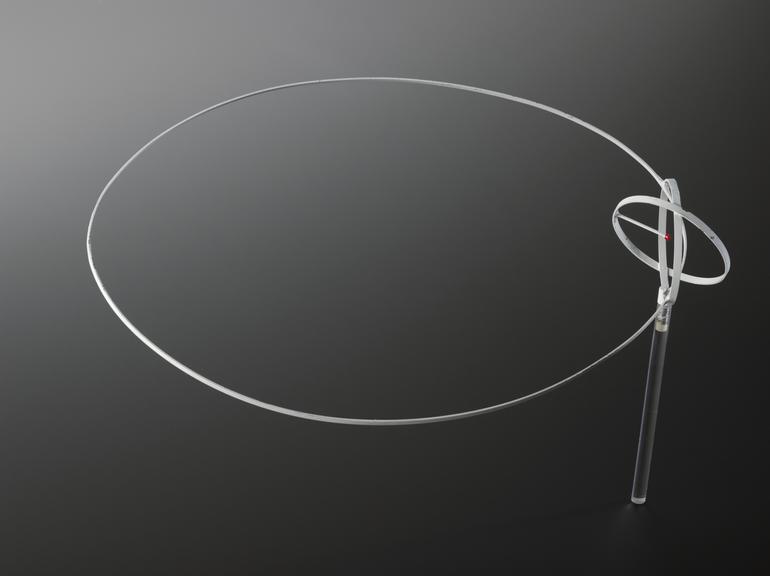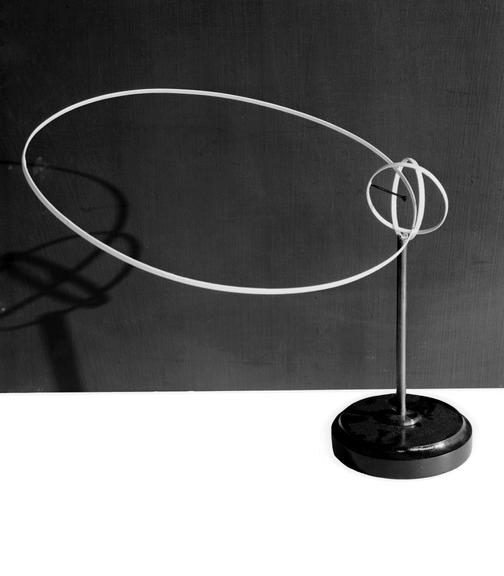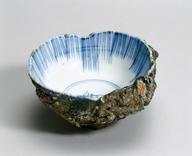







Model of lithium atom according to the Rutherford-Bohr theory of 1911. central nucleus, two electrons, each in a different circular orbit, one electron in elliptical orbit.
Details
- Category:
- Nuclear Physics
- Object Number:
- 1926-373
- Materials:
- metal (painted) and acrylic
- Measurements:
-
overall: 230 x 290 x 120 mm
- type:
- atomic models
- credit:
- Sir Lawrence Bragg (Full name William Lawrence Bragg but known as 'Sir Lawrence' to distinguish him from his father, Sir William Henry Bragg)




